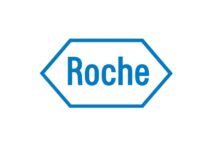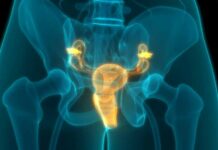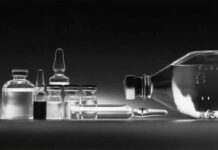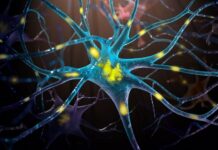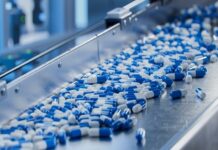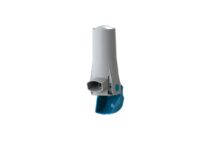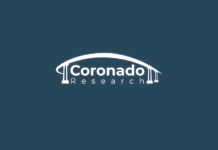In mid-2018, nitrosamine content, also called NDMA, was found to go beyond the guidelines when it came to the daily intake limits of a hypertension medicine that is widely used and has potentially carcinogenic effects for patients. What thereafter followed was a detailed risk evaluation in terms of all the drug products that are relevant, thereby leading to over 1400 product lots being recalled from the market by September 2020.
In mid-2021, the picture went on to worsen when a range of drugs happened to be recalled because of the presence of numerous other nitrosamine drug substance related impurities. As per a 2023 paper, industry as well as regulators now happen to be in a challenging situation where NDSRIs may as well be present in hundreds of medicinal products, some of them even affecting whole bunches of essential drug classes like β-blockers.
At first identified almost four decades ago, nitrosamines happen to be ubiquitous carcinogens that are generally present in water and food. As underscored by the events that have taken place in the last 6 years, nitrosamines can go on to form in drug products by way of chemical reactions that happen to take place across manufacturing. The EMA has also gone on to publish a list of the causes pertaining to nitrosamine formation within pharmaceutical products. These happened to have the usage of contaminated raw materials within the gamut of API manufacturing, the usage of recovered materials, as well as cross-contamination when it comes to manufacturing lines.
Packaging materials, which happen to be a source of E&L
Because of their quite prolonged contract with the drug product, packaging components have always been a potential source in terms of contamination, with impurities going from primary packaging materials into products in the form of extractables and leachables. When it comes to nitrosamines, contaminants can go on to crop up from the reactions of the residual amine impurities having a nitrosating source within the excipient in terms of packaging materials or also from reactions of nitrosating sources within the drug formulation having residual amines in the packaging. It is well to be noted that nitrocellulose blister packs happen to be a major concern, however, there is also a well-known link between rubber, which is an important material used in the container closure systems of injectable products, and nitrosamines.
But as per the Material Development Manager with Datwyler, Dr. Tine Hardeman, a parenteral packaging provider, it is not always bad news since the typical link that is made between the rubber and the nitrosamines happens to be no longer valid in terms of most of the rubbers that are used in parenteral packaging in the times of today.
Because of the history of advancements in chemistry that have gone on to decrease the dependence of the sector on antioxidants as well as additives in terms of rubber formulations blended with major enhancements to the cross-linking systems, along with the inception of coating technology, today’s pharma rubber happens to be most often classified as having an ultra-low extractable as well as leachable content.
As per Dr. Hardeman, with time, major progress has been made in the sector, and it is indeed challenging, or one may say next to impossible, to completely limit the extractables amount; however, it has indeed been pretty greatly decreased when one compares the older formulation with the new ones.
The evolution when it comes to pharmaceutical rubber
Dr. Hardeman goes on to describe the complete evolution of pharma elastomers, right from natural rubber compounds to those that are synthetic in nature, such as BIMs.
In spite of offering some incredible elastic properties, natural rubber happens to be often recalled for its capacity to cause anaphylaxis in individuals with latex allergies. Even after the sector went on to eradicate the latex allergens through switching to synthetic polyisoprene, drug manufacturers still happen to be dealing with the poor gas barrier traits of elastomers as well as an unclean crosslinking system.
Crosslinking processes happen to be fundamental in terms of achieving the desirable mechanical properties; however, the system that is used for polyisoprene goes on to involve a very slow reaction between zinc and sulfur that needs accelerators such as thiuram.
Dr. Hardeman adds that pretty rapidly, a shift has been made towards butyl rubber, which happens to have a much lower gas permeability. She adds that it is still quite a challenging way to cross link that leads to not-so-clean rubber, which is why halobutyl rubber got introduced. Notably, like its predecessor, halobutyl happened to come with a naturally low gas permeability, and the major enhancement was in the cleaner crosslinking system that the compound enabled on halogenation with bromine and chlorine, which happened to speed up the process quite significantly.
Due to all this, the material tends to become very reactive in itself, which means that one has to add less harsh chemicals so as to get the crosslinking reaction going, says Dr. Hardeman. It is this very avoidance when it comes to accelerators that has safeguarded modern container closure systems by way of nitrosamine formation.
It is well to be noted that accelerators go on to generate secondary amines, which happen to be potential nitrosamine precursors. Being able to eradicate accelerators in the formulation recipe hence expels the concerned nitrosamine risk.
The latest generation of pharmaceutical rubber
While halobutyl went on to address numerous issues that drug manufacturers had gone on to be experiencing for many decades, there still happened to be a room for enhancement, specifically in terms of packaging large-molecule drugs that happen to be especially sensitive to interactions with E&L.
The fact is that pharmaceutical rubber formulations have clearly come of age, however, the scientists are consistently looking out for ways for more enhancement. Although the sector’s updated nitrosamine crisis cannot be held back by modern pharmaceutical rubber, all this still happen to be serving as a reminder of the requirement for advancing materials so as to strive for much higher levels in terms of cleanliness as well as quality.



